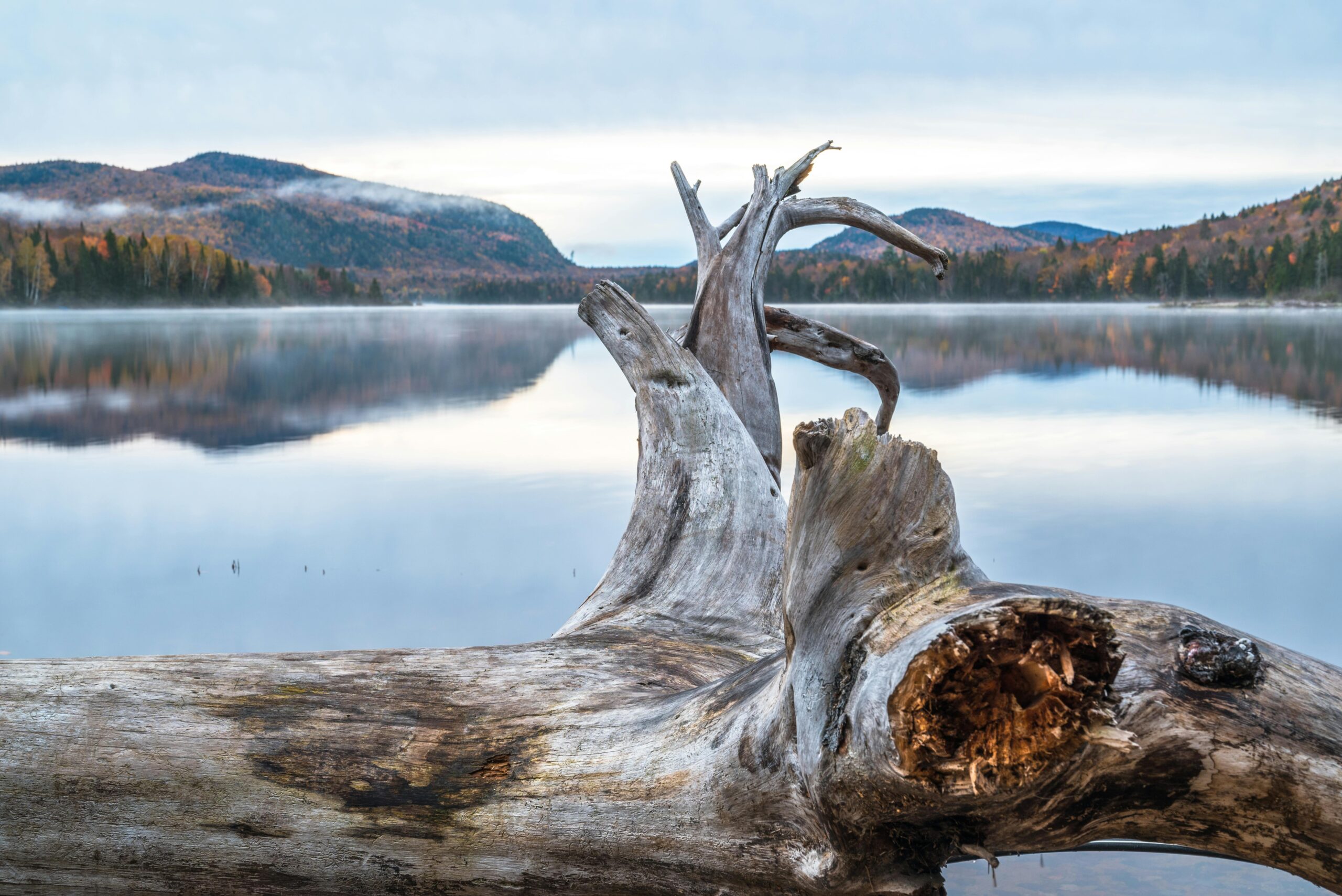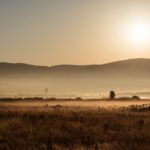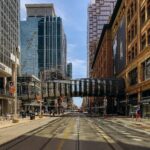Table of Contents
- The Unforgettable Allure of Canada’s Fall Colours
- Ontario’s Majestic Canvas: Algonquin Provincial Park’s Fall Foliage
- Quebec’s Fiery Spectacle: Experiencing Mont-Tremblant in Autumn
- A Coastal Masterpiece: The Cabot Trail’s Breathtaking Fall Scenery
- The Rockies Ablaze: Banff & Jasper’s Golden Larch Season
- Urban Oasis: Stanley Park’s Surprising Autumn Splendor
- Essential Tips for Your Canada Fall Foliage Adventure
- Frequently Asked Questions About Canada’s Fall Foliage
For those beginning a new chapter in Canada, whether as a student, a professional, or a new permanent resident, embracing the local culture and environment is a vital part of the journey. Few experiences are as quintessentially Canadian as witnessing the country’s landscape ignite in a brilliant display of red, orange, and gold during autumn. This seasonal transformation, popularly known as fall foliage, is more than just a beautiful sight; it is a cherished national event, a symbol of change, and a profound connection to the natural world. From the iconic maple leaf that adorns the flag to the crisp autumn air that signals the coming of winter, the fall season is deeply woven into the fabric of Canadian identity. This guide provides a comprehensive overview of the most spectacular locations across the country to experience this natural wonder, offering insights to help you plan an unforgettable journey into the heart of Canada’s autumn splendor.
The Unforgettable Allure of Canada’s Fall Colours
The annual spectacle of Canada’s fall foliage is a powerful and moving experience that captivates millions. The phenomenon is rooted in a simple biological process: as days shorten and temperatures drop, chlorophyll in leaves breaks down, revealing the vibrant yellow and orange pigments that were present all along. The brilliant reds and purples, particularly famous in species like the Sugar Maple, are produced by sugars trapped in the leaves. This symphony of color creates a visual masterpiece that transforms vast forests into breathtaking panoramas. Beyond the science, however, lies a deep cultural significance. The maple leaf, the ultimate symbol of Canada, is at its most glorious during this time. Seeing the forests blaze with the same deep red as the national flag fosters a strong sense of place and identity. For many, the season represents a time of harvest, reflection, and cozy preparation for the winter ahead. It encourages a slower pace of life, inviting people outdoors for crisp hikes, scenic drives, and quiet moments of appreciation for the country’s immense natural beauty before the landscape is blanketed in snow.
Ontario’s Majestic Canvas: Algonquin Provincial Park’s Fall Foliage
When one imagines classic Canadian fall foliage, the rolling hills and dense maple forests of Algonquin Provincial Park in Ontario often come to mind. As one of Canada’s largest and oldest provincial parks, Algonquin offers an immersive and powerful autumn experience. The peak viewing season here is typically from late September to early October, when the park’s vast stands of Sugar and Red Maples turn fiery shades of scarlet, crimson, and orange. The Highway 60 corridor, which runs through the southern portion of the park, is the most accessible area and offers numerous lookout points, trailheads, and visitor centers. For a truly profound experience, venture beyond the roadside. Renting a canoe and paddling across one of the park’s thousands of serene lakes, surrounded by hillsides of blazing color, is an unparalleled way to connect with the scenery. Popular hiking trails like the Lookout Trail and the Hardwood Lookout Trail provide stunning panoramic vistas that are perfect for photography. Because of its popularity, it is crucial to plan a trip to Algonquin well in advance. Accommodations, whether camping or in nearby lodges, book up months ahead, and park permits for day use can also be limited during peak weekends.
Quebec’s Fiery Spectacle: Experiencing Mont-Tremblant in Autumn
The Laurentian Mountains in Quebec offer a fall foliage experience with a distinct European charm, and its heart is the vibrant resort town of Mont-Tremblant. The region is renowned for its spectacular and intense fall colors, where the brilliant reds of maples are contrasted with the deep greens of coniferous trees and the bright yellows of birch and aspen. The pedestrian village at the base of the mountain, with its colourful European-style architecture, serves as a stunning foreground to the fiery hillsides. For the most impressive views, a ride on the panoramic gondola to the summit of Mont-Tremblant is an absolute must. From the top, you are rewarded with a 360-degree view of the surrounding landscape, a seemingly endless carpet of vibrant color stretching to the horizon. The area also boasts an extensive network of hiking and biking trails suitable for all skill levels, allowing visitors to immerse themselves directly in the autumn woods. The season, known locally as “l’été des Indiens” (Indian summer), often brings warm, sunny days perfect for exploring, followed by cool, crisp evenings. The combination of spectacular nature, charming culture, and outdoor activities makes Mont-Tremblant an essential fall destination, particularly for those looking to experience Quebec’s unique character.
A Coastal Masterpiece: The Cabot Trail’s Breathtaking Fall Scenery
For a truly unique fall foliage experience where fiery colors meet the deep blue of the Atlantic Ocean, few places in the world can rival Nova Scotia’s Cabot Trail. This world-famous scenic highway loops around the northern tip of Cape Breton Island, winding through the spectacular Cape Breton Highlands National Park. During autumn, typically in the first few weeks of October, the highlands erupt in a dazzling display of reds, oranges, and golds. What makes this destination so remarkable is the dramatic contrast between the warm-hued forests and the rugged, windswept coastline. The road climbs to breathtaking elevations, offering spectacular ocean vistas from lookouts like the Skyline Trail, where you can stand on a headland cliff and watch the sunset over the Gulf of St. Lawrence, with colorful forests cascading down to the sea. The Cabot Trail is more than just a drive; it is an immersive cultural journey. Along the way, you can explore charming fishing villages, enjoy fresh seafood, and experience the rich Celtic and Acadian heritage of the region. The combination of awe-inspiring natural beauty, maritime culture, and a sense of wild remoteness makes the Cabot Trail an unforgettable autumn road trip.
The Rockies Ablaze: Banff & Jasper’s Golden Larch Season
While Eastern Canada is famous for its red maples, the Canadian Rockies in Alberta offer a different yet equally spectacular autumn display: the golden season of the Larch trees. Larches are unique coniferous trees that, unlike pines and spruces, turn a brilliant golden-yellow and lose their needles in the fall. For a brief period, typically in the last two weeks of September, entire mountainsides in Banff and Jasper National Parks are painted in shimmering gold, contrasted against the evergreen pines, turquoise glacial lakes, and snow-dusted peaks of the Rockies. This phenomenon creates a surreal and almost magical landscape that has to be seen to be believed. The most famous destination to witness this is the Larch Valley trail near Moraine Lake in Banff National Park, a hike that leads you into a forest of pure gold. Other popular spots include Sentinel Pass and the area around Lake Louise. Due to the short and highly sought-after window for viewing the larches, these areas become extremely popular. It is essential to plan ahead, arrive very early in the day to secure parking, and be prepared for mountain weather, which can change rapidly. The golden larch season offers a unique and powerful western Canadian take on fall foliage.
Urban Oasis: Stanley Park’s Surprising Autumn Splendor
Experiencing Canada’s fall foliage does not always require a trip to a remote national park. For those in or visiting Vancouver, British Columbia, a world-class autumn display can be found right in the heart of the city at Stanley Park. This massive 1,000-acre urban rainforest offers a diverse collection of trees that put on a spectacular show throughout the fall months. The famous Seawall, which circles the park, provides a fantastic route for walking or cycling, with stunning views of the city skyline and the North Shore mountains, all framed by the warm colors of the changing leaves. Venturing into the park’s network of forest trails allows for a more immersive experience, where you can stroll under a canopy of golden and red leaves from maple, alder, and birch trees. The park’s gardens, including the Ted and Mary Greig Rhododendron Garden, also offer beautiful displays of fall color from various shrubs and trees. Stanley Park’s accessibility makes it an ideal destination for a spontaneous autumn walk or a planned afternoon of photography. It serves as a powerful reminder of how deeply nature is integrated into Canada’s urban centers, offering a convenient and beautiful escape for residents and visitors alike to enjoy the seasonal transition without leaving the city.
Essential Tips for Your Canada Fall Foliage Adventure
To make the most of your journey to witness Canada’s stunning autumn colours, careful planning is key. The timing, weather, and popularity of these destinations can significantly impact the experience. Here are some key takeaways to help you prepare for an unforgettable trip:
- Timing is Everything: Peak fall foliage varies by region and year. Generally, the colors peak in late September in the Rockies (larches) and central Canada (Algonquin), and in early to mid-October in Quebec and the East Coast (Cabot Trail). Check local park websites and fall foliage reports for real-time updates as your travel dates approach.
- Book Accommodations and Permits Early: The fall color season is incredibly popular. Hotels, campgrounds, and rental cars in prime locations like Banff, Algonquin, and Cape Breton can be fully booked months in advance. Some parks may also require advance booking for day-use permits, especially on weekends.
- Dress in Layers: Autumn weather in Canada can be unpredictable. A single day can bring sunshine, rain, and even a dusting of snow in higher elevations. Dressing in layers—with a waterproof outer shell, a warm fleece or sweater, and a base layer—will ensure you stay comfortable no matter what the weather brings.
- Be Prepared for Crowds: The most famous viewing spots and hiking trails can be very busy, particularly on weekends. To avoid the largest crowds, try to visit on a weekday or start your day very early. Exploring lesser-known trails can also lead to more peaceful and rewarding experiences.
- Don’t Forget Your Camera: The lighting during autumn, especially during the ‘golden hours’ of early morning and late afternoon, is perfect for photography. A polarizing filter can help reduce glare and make the colors appear even more vibrant in your photos.
Frequently Asked Questions About Canada’s Fall Foliage
What is the best time to see fall foliage in Canada?
The best time varies by region. For the golden larches in the Rockies (Banff, Jasper), the peak is typically the last two weeks of September. For the maple forests in Ontario and Quebec (Algonquin, Mont-Tremblant), the best colors usually appear from late September to early October. On the East Coast (Cabot Trail), the peak often occurs in the first half of October.
What is the difference between fall foliage in Eastern and Western Canada?
Eastern Canada, particularly Ontario and Quebec, is famous for its vast deciduous forests dominated by Sugar Maples, which produce brilliant shades of red, orange, and yellow. Western Canada, especially the Rocky Mountains, is known for the unique Larch tree, a conifer that turns a stunning golden-yellow before losing its needles, creating a very different but equally spectacular visual effect.
How can I avoid crowds during the peak fall foliage season?
To avoid the largest crowds, plan your visit for a weekday rather than a weekend. Starting your day very early allows you to enjoy popular spots before they get busy. Additionally, consider exploring less famous trails or scenic drives, which often provide beautiful views with more solitude.
What should I pack for a fall hiking trip in Canada?
Dressing in layers is essential for fall hiking in Canada due to unpredictable weather. You should pack a waterproof and windproof outer jacket, a warm mid-layer like a fleece or down vest, and a moisture-wicking base layer. Sturdy hiking boots, a hat, gloves, and plenty of water are also crucial for a safe and comfortable trip.
Talk to us to find out more. ->
The content above is not intended to provide legal advice or opinions of any kind and may not be used for professional or commercial purposes.







